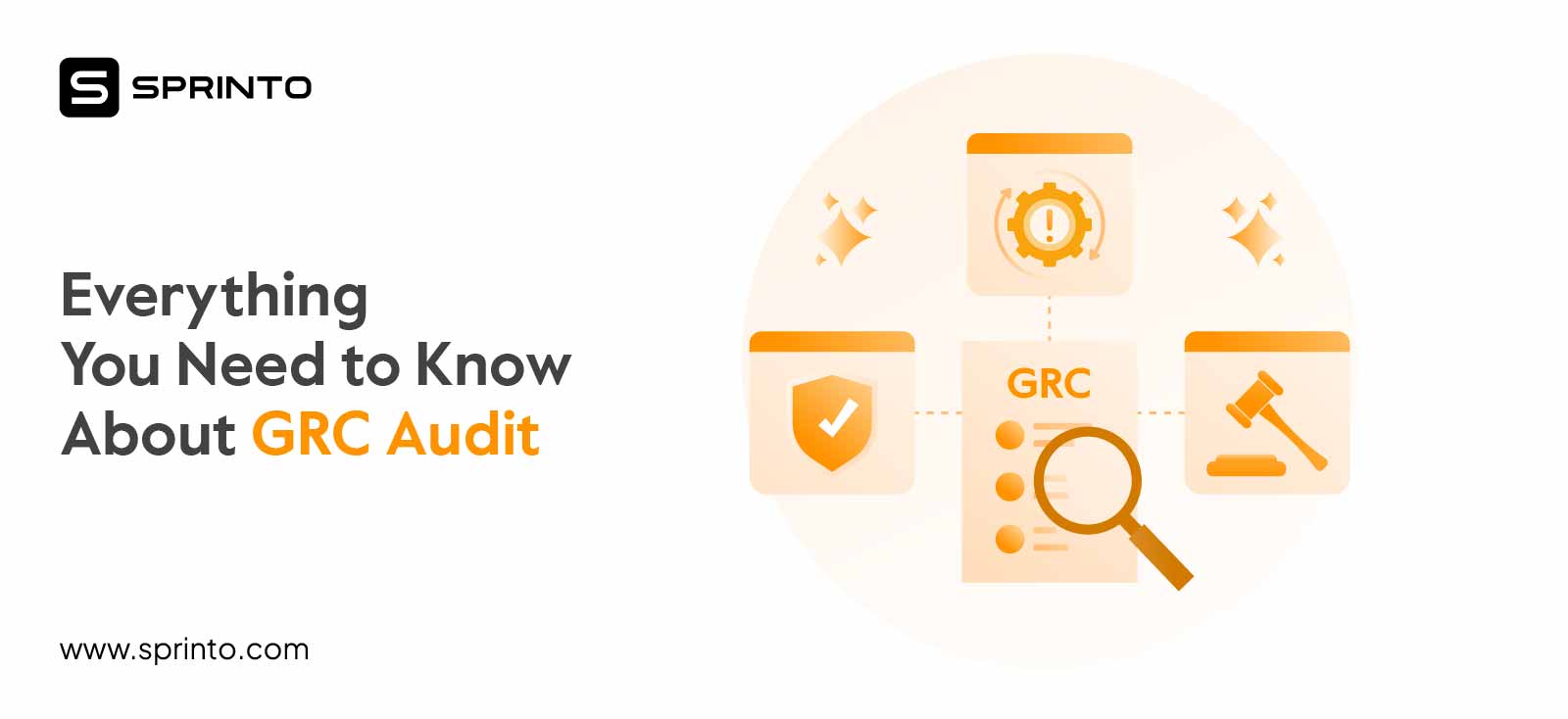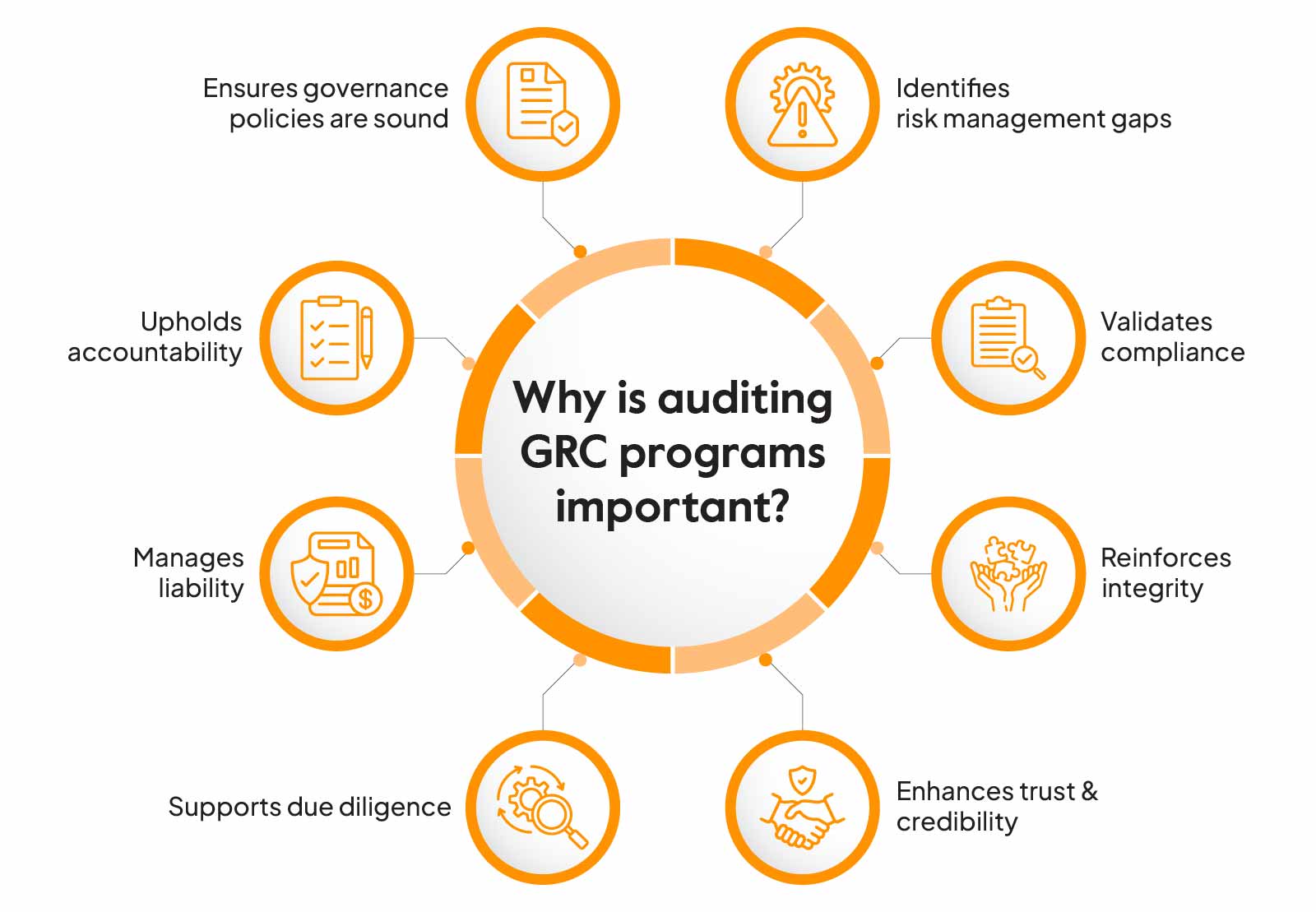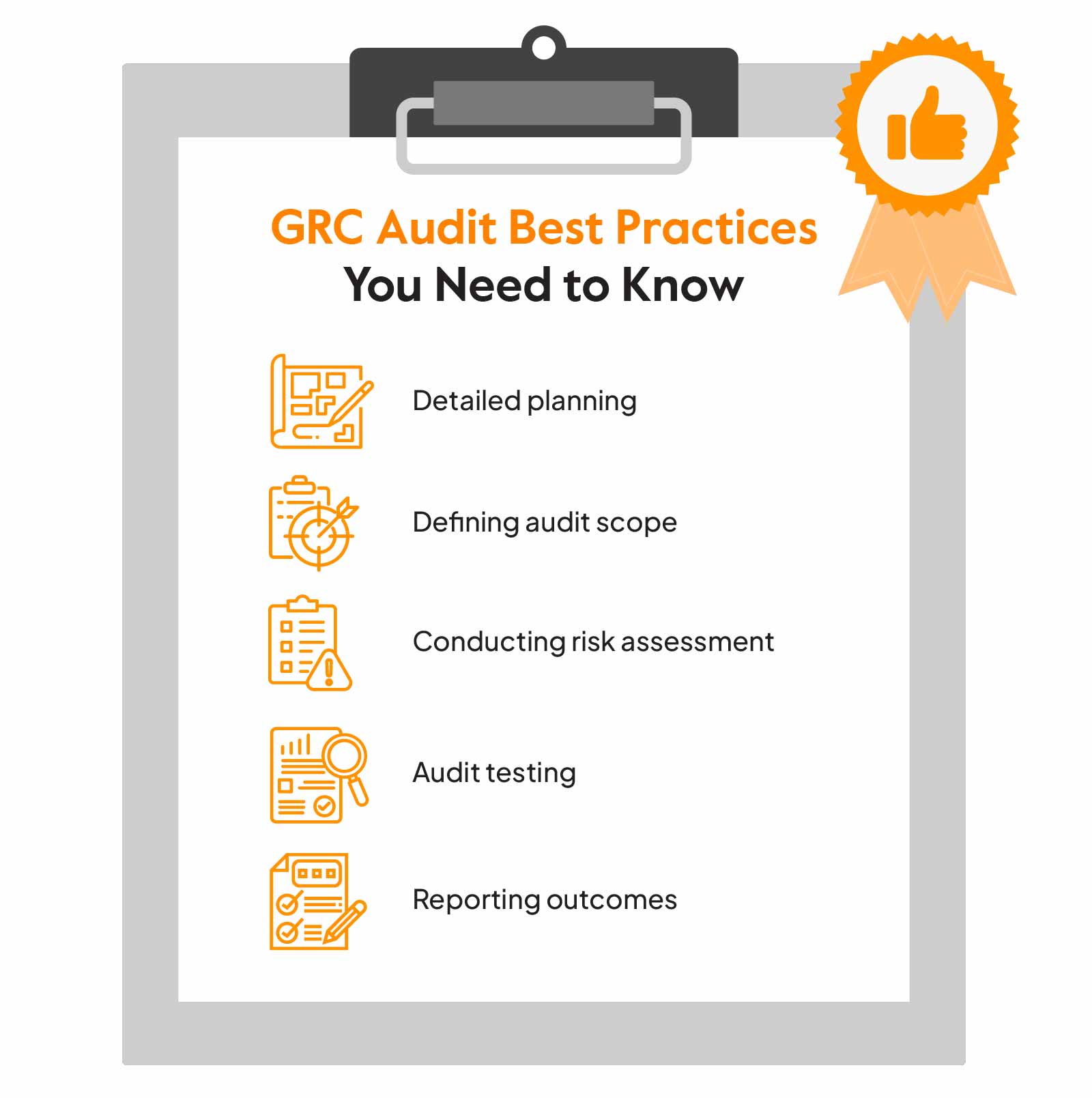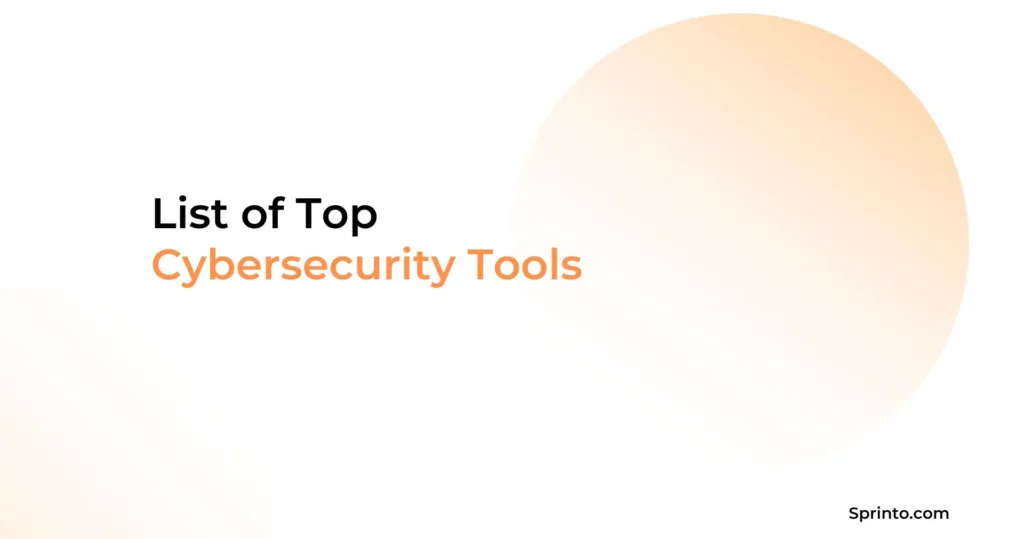
Do you know that 44% of organizations plan to implement GRC or upgrade their existing implementation?
Why so? Because GRC audits are proving to be an eye-opener for organizations so that they can optimize their GRC processes and controls.
This helps businesses stay on top of their security and compliance game.
Regular GRC audits are crucial to identify any potential gaps and address them before they lead to any security disaster or compliance violations. But how does the GRC audit work, and how can you conduct one?
This blog post provides a full overview of GRC audits. It covers the importance of regular audits and how you can perform audits. It discusses integrating audits into the broader GRC program. The blog also outlines the best practices and covers reporting audit findings. So, let’s dive in!
What is GRC Audit?
A governance, risk management, and compliance (GRC) audit inspects an organization’s policies and processes for alignment with regulatory and compliance requirements and ensures that any risks that come up as a result of security vulnerabilities or policy lapses are identified and addressed sufficiently. GRC audits can be conducted internally to improve procedures or externally by an independent auditing firm annually to gain certifications and report results to stakeholders and customers.
Why is auditing GRC programs important?
The importance of Auditing a GRC program helps organizations gauge the effectiveness of the program so that they can optimize and enhance GRC processes continually.

Here are some key points that shed light on the importance of GRC audit:
- Ensures governance policies are sound – Auditing governance processes verify they are ethical, accountable, transparent, and avoid strategic oversight.
- Identifies risk management gaps – Assessing risk management procedures helps uncover any potential issues or gaps in identifying, analyzing, and responding to business risk.
- Validates compliance – Auditing confirms that policies and internal controls are in place in adherence with all applicable laws, regulations, and standards.
- Reinforces integrity – Audits support alignment between activities and core values, promoting organizational integrity.
- Enhances trust & credibility – Auditing demonstrates the seriousness and rigor of the GRC program to both internal and external stakeholders.
- Supports due diligence – External audits provide validation to the board, investors, and partners that the organization is meeting GRC responsibilities.
- Manages liability – Auditing mitigates legal, financial, and reputational risks by proactively addressing issues for business continuity.
- Upholds accountability – Audits ensure transparency and accountability at all levels of the organization.

How does a GRC Audit Work?
GRC auditing evaluates how an organization implements GRC processes compared to a selected GRC framework. GRC auditing activities generally involve the following:
- Checking evidence that the organization has GRC controls in place
- Testing security controls that manage cybersecurity risks
- Reviewing if departments follow relevant regulations
Auditors examine evidence like compliance documents, policies/procedures, employee interviews, system logs (from SIEM tools), and other useful compliance-related records to verify the status of GRC controls across the organization. They test key security controls to check major security risks are managed appropriately.
Auditors then review compliance processes and controls in different teams and departments with relevant regulations and laws such as PCI DSS, GDPR, and so on. Any gaps or security issues found in the audit are reported along with the remediation steps.
GRC Audit Best Practices You Need to Know
Like any other cybersecurity audit, successful GRC audits involve inculcating a few best practices while auditing. Some of them are listed below:

Detailed planning
GRC audit can go more smoothly if your audit plan takes care of the following points:
- The audit and business goals are clearly defined and communicated to everyone involved.
- Staff are trained and prepared to perform the internal audit.
Defining audit scope
The specific GRC components to be audited are identified beforehand. The auditor needs to identify major operational processes and all the IT systems and databases that are part of the GRC program.
Conducting risk assessment
Before the audit testing, you need to identify and assess the risks associated with the audit. This ensures a smooth audit plan and helps you prepare for specific audit tests.
Audit testing
Doing a test run of the GRC audit is critical to finding effective and inefficient audit processes. The overall size of the audit can determine which processes need testing.
Reporting outcomes
Documenting the results from all audit activities after an internal GRC audit ensures learnings are applied to improving the GRC program in the future.
The scope and structure of each GRC program vary based on an organization’s specific needs. Hence, the best practices for an effective GRC audit may also change over time, especially as the GRC program matures.
What are GRC tools, and how to use them while auditing?
GRC tools are software applications that help organizations with their business functions, such as managing policies, evaluating risks, regulating user access, and simplifying compliance processes and audit planning.
The tools can assist with audits by:
- Making it easier to gather evidence from different organizational assets
- Governing audit processes as stated in the overall GRC and security policy
- Aligning compliance needs of regulatory frameworks with internal GRC audits
- Speeding up completion of GRC audits
GRC audit software helps simplify GRC management and streamlines the program during an internal GRC audit. Let’s have a look at a few recommended GRC tools for auditing.
Read more: GRC Automation: How to Get Started
Recommended GRC tools for auditing
GRC tools help you manage security and compliance so that you can prepare for audits. They help you conduct an effective GRC internal audit to identify gaps before your external audit. Some of the recommended GRC tools for auditing are:
Sprinto
Sprinto is a smart compliance automation and GRC audit platform that helps organizations create an effective continuous compliance framework and automate repeatable regulatory compliance tasks with ease. With a real-time health dashboard, you can see your organization’s security and compliance status at all times from a single platform. Sprinto’s automated evidence collection and reporting helps you prepare for internal and external audits seamlessly with regular compliance reports.
Sprinto’s GRC features include:
- Risk identification and management to mitigate potential risks and threats
- Compliance automation and management for different frameworks such as SOC 2, HIPAA, PCI DSS, etc.
- Consolidated reports and evidence collection for internal and external audits
- Incident management and disaster recovery planning module
- Third-party vendor risk management
- Workflow automation for repetitive tasks and processes
- Actionable, real-time, insightful analytics from a single dashboard
Read about how CareStack used Sprinto to streamline compliance and organize multi-framework audit in 3 months
Schedule a demo to learn more.
AuditBoard
Auditboard is a GRC audit management tool that integrates audit, risk, and compliance to help businesses make strategic decisions efficiently. The collaborative platform helps everyone on the internal audit team stay on the same page regarding compliance and audits. It automates findings management and reporting by providing real-time visibility into gaps and issues to streamline the audit process.
Hyperproof
Hyperproof is a compliance management solution that helps you track audit requirements for different compliance standards and manage risks effectively. With centralized evidence collection and management, Hyperproof makes it easier for companies to breeze past external audits by demonstrating compliance proof.
Checkout: Hyperproof Alternatives: Compare Top 5 Competitors
Closing Thoughts
Performing a GRC audit helps you understand whether your governance, risk, and compliance processes are working effectively. Good audits need planning, testing, and clear reporting. An effective GRC software simplifies evidence gathering, compliance tracking, and helps organizations conduct more impactful audits.
Sprinto, a comprehensive GRC audit and compliance automation software helps you streamline compliance, strengthen your auditing process, and leverage real-time visibility of your security posture and compliance status. Get in touch with our experts to see Sprinto in action.
FAQs
What are some of the best practices for GRC auditing?
- Develop a strategic plan and communicate it to the stakeholders
- Leveraging relevant technologies for improved efficiency
- Staying on top of the latest trends and regulatory requirements
- Improve and adapt the GRC audit process
Why is performing a GRC audit important?
Performing a GRC is highly significant for identifying and mitigating risks effectively. It also helps you improve your operational efficiency and ensure compliance, thereby promoting credibility and trust among your clients and stakeholders.
How to maintain compliance after a GRC audit?
Businesses can maintain compliance by following the regulatory changes, performing regular updates of policies and controls, conducting regular assessments, and inculcating a security-first culture in the organization to meet regulatory requirements.
What is the frequency of performing a GRC audit?
GRC audit is not a one-size-fits-all process; hence, the process of performing an audit can vary based on the size and the industry. Hence, It can be performed either annually or periodically based on the requirements of your organization.
Gowsika
Gowsika is an avid reader and storyteller who untangles the knotty world of compliance and cybersecurity with a dash of charming wit! While she’s not decoding cryptic compliance jargon, she’s oceanside, melody in ears, pondering life’s big (and small) questions. Your guide through cyber jungles, with a serene soul and a sharp pen!
Explore more
research & insights curated to help you earn a seat at the table.





















